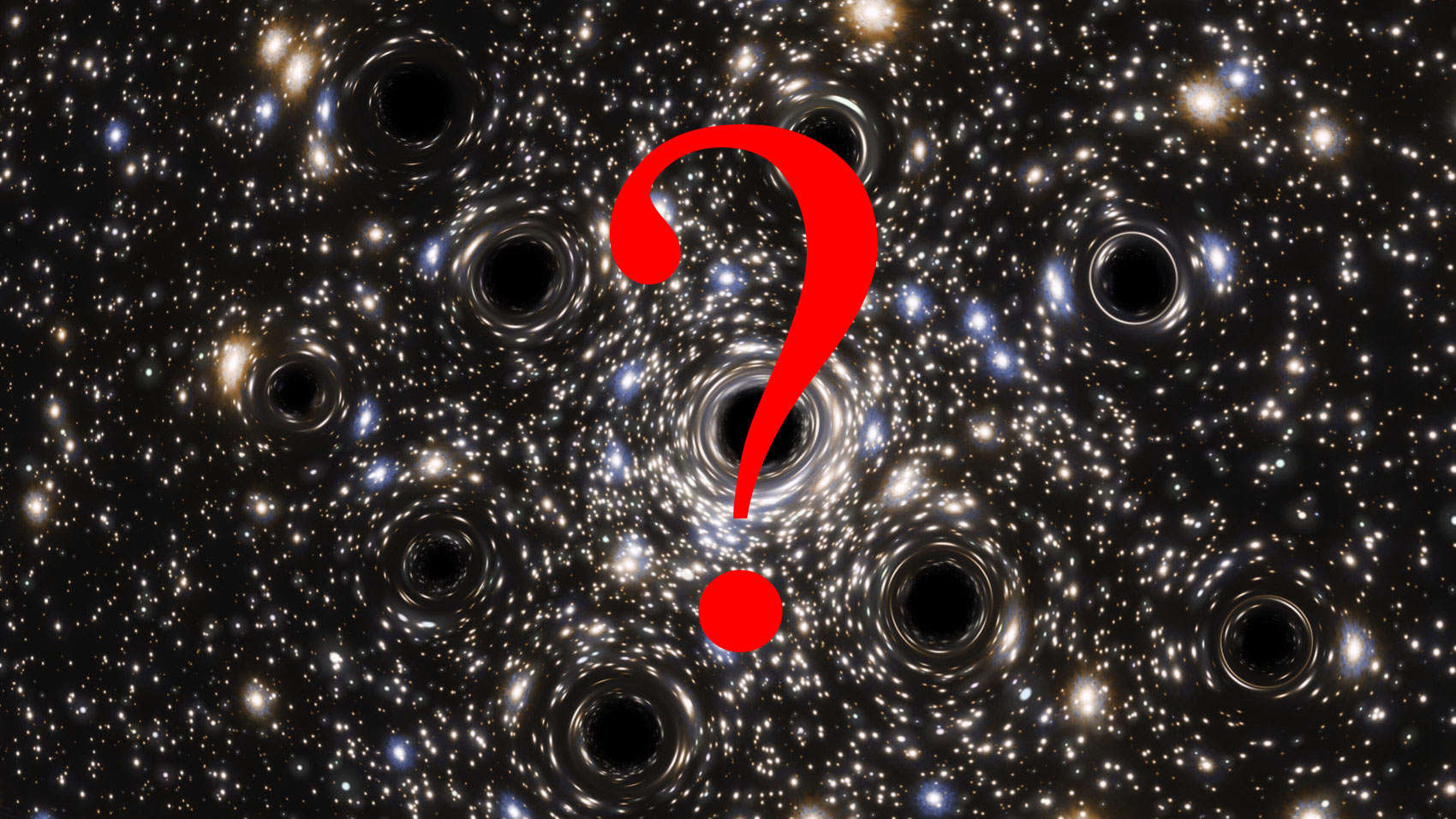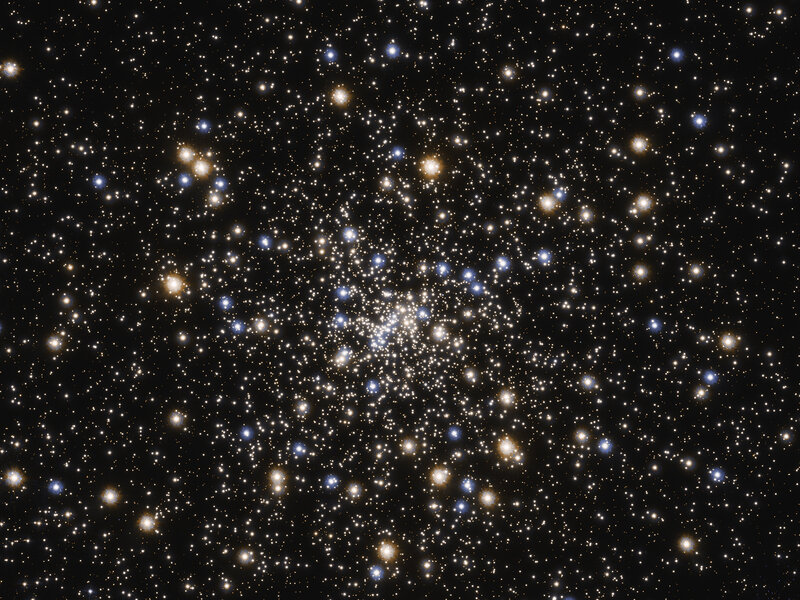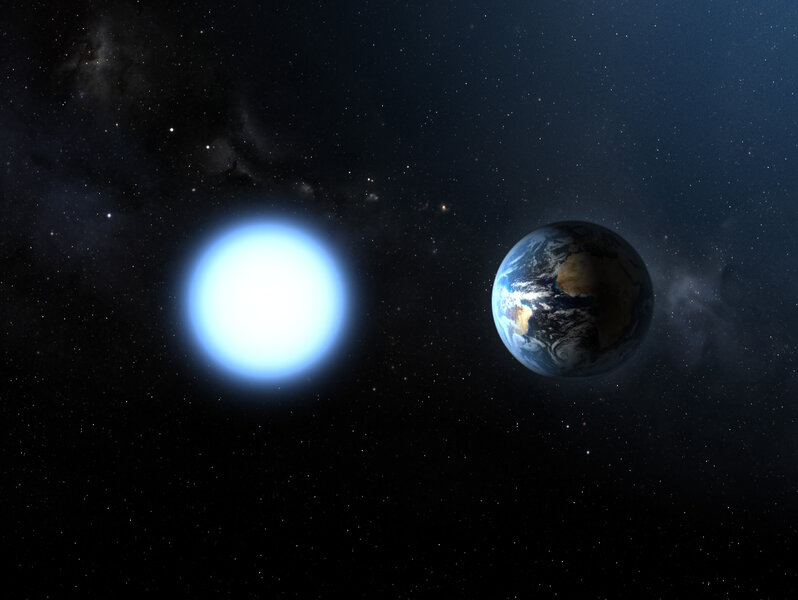Create a free profile to get unlimited access to exclusive videos, sweepstakes, and more!
Wait: Do black holes *really* swarm in the core of globular cluster NGC 6397?

Recently here on the blog I wrote about the globular cluster NGC 6397, a collection of a hundreds of thousands of stars in a compact ball, orbiting the Milky Way and currently about 8,000 light years from Earth.
I wrote about it because a pair of astronomers ran statistical models on the way the stars are orbiting in the cluster, and claimed there's a pretty good chance that there's a swarm of stellar-mass black holes in the cluster core, with a total mass of 1,000–2,000 times the Sun's, meaning there could be anywhere from many dozens to a couple of hundred black holes there.
However, a new paper was just published by a different group of astronomers, basically saying the first paper is wrong. They say that not only are there unlikely to be any black holes in the cluster core, it's unlikely for there to be many black holes in the cluster at all. This means they are completely contradicting the other paper. They also say that the claims of a black hole swarm in the first paper are contradicted for "reasons that have been understood theoretically for many decades." Oof. Strong words!
The problem has to do with the structure and evolution of the cluster. Massive stars born when the cluster first forms explode as supernovae relatively quickly, leaving behind neutron stars and black holes. There could have been several hundred black holes in NGC 6397 a few million years after it formed.
Because they're more massive than most stars, when a black hole passes a star (which happens pretty often; clusters like this are pretty tightly packed) the black hole will tend to lose orbital energy and sink to the center, while the star gains energy and moves outward (this is called dynamical friction). The next few steps get complicated, but as the black holes settle into the core, they capture each other to become binaries, orbiting each other. If a star passes them that star gets a decent kick from the orbital energy of the two black holes orbiting each other and importantly the black hole binary does as well. This kick sends the black hole binary out of the core and sometimes out of the cluster entirely.
What this winds up doing is inflating the core of the cluster, making it larger as stars get kicked away from the center. However NGC 6397 does not have an inflated core. In fact the core is compact, which can only happen if there are no black holes there at all.
However, the first paper does rather convincingly show that there appears to be a population of dark objects there in the core of the cluster. If they're not black holes, what are they?
The new paper claims they're white dwarfs, the low-mass cores of stars like the Sun after they die and eject their outer layers. White dwarfs have masses around the mass of the Sun, while black holes are much more massive (at least 3-5 times the Sun's mass and generally much more), so you don't get the same percolation problem as you do with black holes. That allows the core to be compact yet still have dark objects in it.
The astronomers used models of cluster star populations to show that a thousand or so white dwarfs do the trick well, and generating that many over the current life of the cluster is expected (it likely started with 400,000 or so stars many billions of years ago, so plenty of time to create lots of white dwarfs).
I'll admit this paper looks pretty tight. It's succinct and shows it's very unlikely any black holes are in the cluster core (their best model shows only one black hole remaining, with a mass of roughly 10 times the Sun's). I'll note that in the first paper they were hoping to find an elusive intermediate black hole, one with 100 to 100,000 times the Sun's mass. But the second paper shows this isn't really possible either, for the same reason there are no black hole swarms there. If there are any black holes in NGC 6397 they're probably in the cluster's suburbs and not downtown.
This doesn't mean other clusters may not have a core-dwelling intermediate mass black hole, or a swarm of smaller ones. But in those cases you need to look at globular clusters with more inflated cores, which means they haven't undergone the process of losing all their black holes, so they still retain them.
Globular clusters may naively seem like they'd be simple structures, with so many stars so close together; over billions of years they'd settle down into stable orbits and what you're left with is a relatively uncomplicated system.
But that's not the case at all! These are complex structures, still evolving and changing even today, ten or more billion years after they first formed. It's clear there's still much to understand about them... which is true for everything in astronomy, really. If we think something is simple it probably means we're missing something important.
















